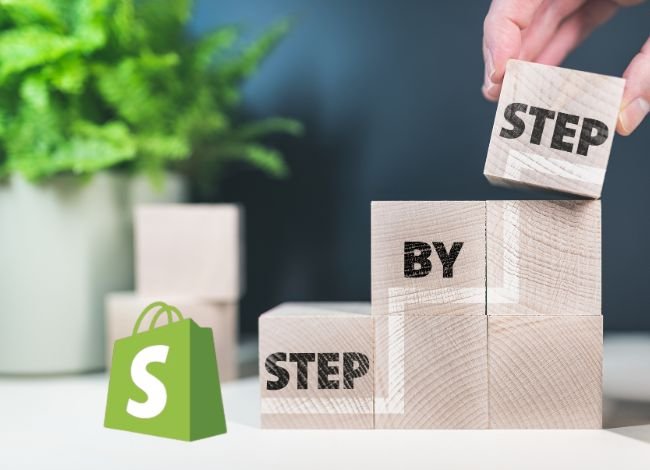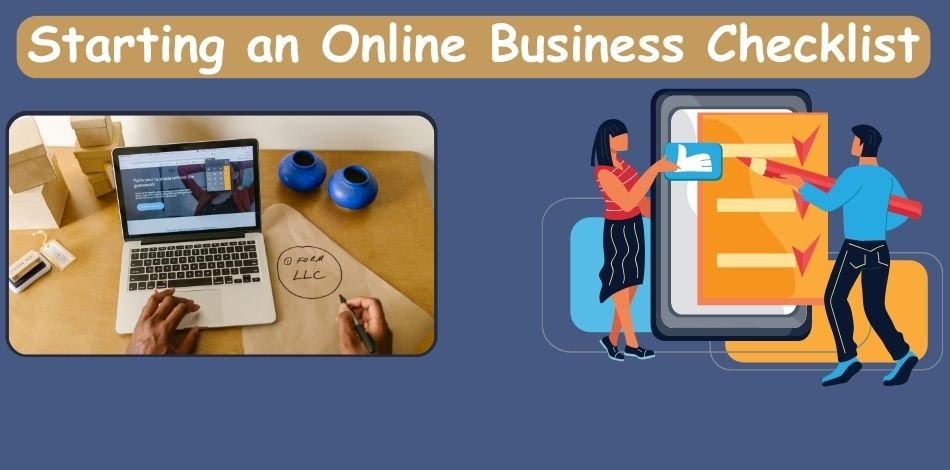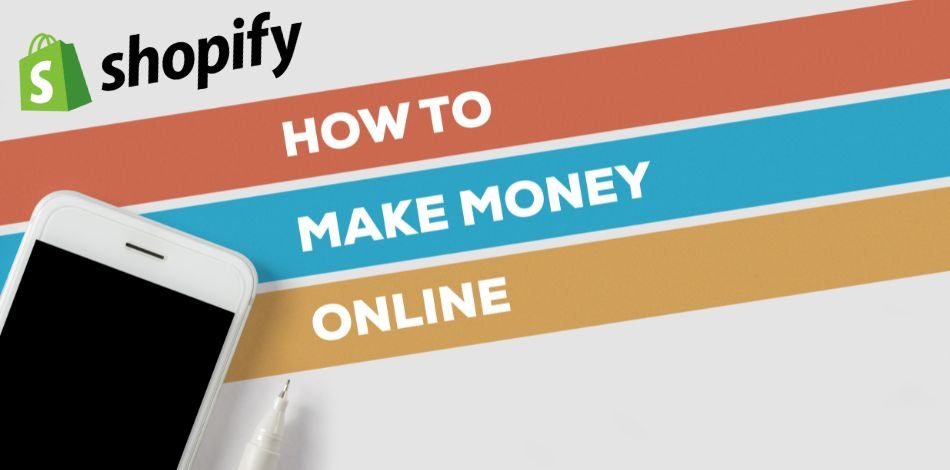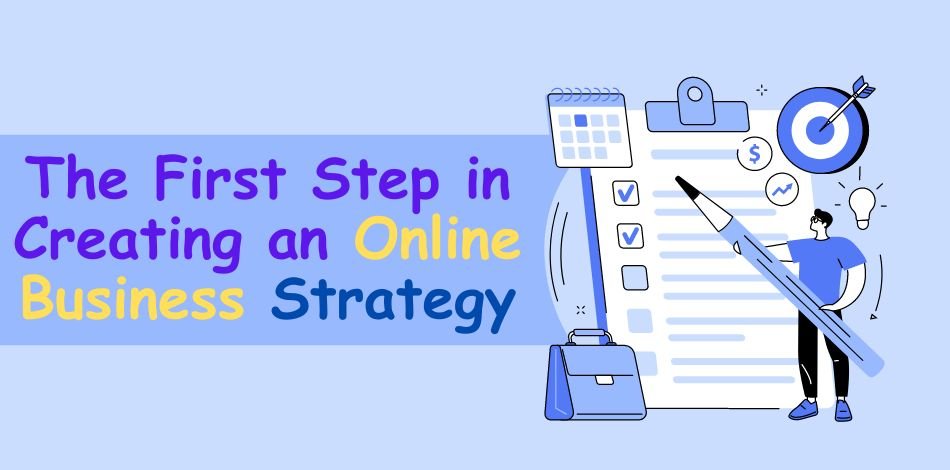Last Updated on October 30, 2025
What is Shopify and How Does It Work?
In today’s fast-paced digital economy, launching an online store has never been more accessible. Among the many platforms available, one name consistently rises to the top: Shopify. But exactly what is Shopify and how does it work?
Shopify is a cloud-based e-commerce platform that enables individuals, entrepreneurs, and businesses of all sizes to create, manage, and scale their online stores without needing advanced technical knowledge. Founded in 2006 by Tobias Lütke, Daniel Weinand, and Scott Lake, Shopify was initially created to sell snowboards online. However, it quickly evolved into a powerful, scalable platform that powers over 4 million websites globally as of 2025.
Its success can be attributed to a seamless user interface, a wide range of tools, and customizable features that allow sellers to bring their vision to life, regardless of their niche or product type. From dropshipping startups to massive brands like Gymshark and Kylie Cosmetics, Shopify has become the go-to solution for digital commerce.
Why Choose Shopify?
Shopify stands out in the crowded world of e-commerce platforms for several reasons:
Ease of Use: Even beginners can set up a store using drag-and-drop features and customizable themes.
Scalability: Whether you’re selling 10 or 10,000 products, Shopify grows with your business.
Security: Shopify is PCI DSS compliant and uses 256-bit SSL encryption to keep customer data safe.
Speed: Pages hosted on Shopify load quickly and reliably, improving customer experience and SEO.
Support: With 24/7 customer support and a massive knowledge base, help is always at your fingertips.
The question of what is Shopify and how does it work can be answered not just by explaining its features, but also by understanding its role in transforming the global e-commerce ecosystem. Shopify isn’t just a tool — it’s a full-fledged digital infrastructure that supports online retail from start to finish.
Shopify in 2025: What’s New?
As of 2025, Shopify continues to innovate:
AI-Powered Product Recommendations: Enhanced shopping experiences through AI-driven suggestions.
Shopify Magic: A built-in AI assistant that helps merchants write product descriptions and respond to customer messages.
Expanded Fulfillment Network: Faster and more reliable shipping through new U.S. and global fulfillment centers.
More Payment Options: Shopify now supports cryptocurrency payments like Bitcoin and Ethereum alongside traditional gateways.
Whether you’re a solopreneur testing a new product or an established business exploring digital expansion, understanding what is Shopify and how does it work is the first step toward launching a successful e-commerce journey.
How Shopify Works – Step-by-Step Setup Process
To fully understand what is Shopify and how does it work, it’s essential to walk through the process of setting up and running a Shopify store. One of the reasons Shopify is so popular is its simplicity. You don’t need to be a developer or designer to create a sleek, functional store. Here’s how Shopify works from start to finish.
1. Sign Up for a Shopify Account
Getting started with Shopify begins with signing up at shopify.com. New users are typically offered a free trial (14 days or more, depending on promotions), allowing you to explore the platform before committing to a paid plan.
Once you enter your email address, store name, and password, you’ll be taken to your Shopify dashboard, where the real magic begins.
2. Customize Your Online Store
After account creation, the next step is to personalize your storefront. Shopify offers:
Free and Premium Themes: Choose from 100+ themes in the Shopify Theme Store.
Drag-and-Drop Builder: Easily change layouts, colors, fonts, and other elements.
Mobile-Responsive Designs: All Shopify themes are optimized for mobile shopping.
Customization is crucial to align your store’s look and feel with your brand identity. You can even tweak HTML and CSS if you want advanced customization.
3. Add Products and Organize Inventory
Now it’s time to fill your store with products. Shopify lets you:
Add product names, descriptions, images, and videos.
Set prices, sale prices, SKUs, and stock levels.
Create product variants (e.g., sizes, colors).
Organize items by categories or collections.
This is a critical part of how Shopify works—it gives you full control over your inventory management while keeping the user interface intuitive.
4. Set Up Payment Gateways
Shopify supports a wide array of payment gateways including:
Shopify Payments (no transaction fees if used).
PayPal
Stripe
Apple Pay & Google Pay
Cryptocurrency Payments (new in 2025)
Buy Now, Pay Later (via Shopify’s partnership with Affirm and Klarna)
You can activate one or multiple options to ensure your customers can pay however they prefer.
5. Choose a Domain Name
A custom domain gives your business credibility and brand recognition. Shopify allows you to:
Buy a domain directly within the dashboard.
Use an existing domain purchased from another provider.
Connect multiple domains and set a primary one.
This step is often overlooked, but it’s essential to make your store memorable and professional.
6. Configure Shipping Settings
Shipping is another key part of how Shopify works. The platform gives you full control over:
Shipping rates (flat rate, free shipping, or calculated by carriers).
Shipping zones (domestic or international).
Integration with major carriers like USPS, UPS, FedEx, DHL, and more.
Real-time shipping calculators and label printing.
Shopify also offers its Shopify Fulfillment Network to simplify logistics for U.S.-based merchants.
7. Set Up Taxes Automatically
Shopify can automatically calculate taxes based on the latest global tax rules. You can:
Enable automated tax calculations.
Override tax rules if necessary.
Add VAT for international sales.
Access detailed tax reports for accounting.
8. Launch Your Store
Once everything is set up and you’ve reviewed your store, it’s time to go live! You can:
Remove the password protection from your site.
Publish your store and begin accepting visitors and orders.
Use Shopify’s launch checklist to ensure nothing is missed.
This marks your official entry into the world of e-commerce.
9. Manage and Scale Your Business
After launching, Shopify provides:
Real-time analytics and dashboards to monitor sales and traffic.
Email and SMS marketing tools.
Inventory alerts and restock notifications.
Order and fulfillment management features.
Everything is centralized in the admin dashboard, making business management more efficient.
The Three Layers of Shopify’s Product Ecosystem
To fully understand what is Shopify and how does it work, it’s important to look beyond the basic store setup and examine the entire Shopify ecosystem. Shopify’s success is rooted in its layered approach, offering flexibility, customization, and scalability to merchants of all sizes.
Shopify has three primary layers of product offerings:
Core Products
Additional Products and Services
Apps Built by Trusted Partners
Let’s break down each layer and what it brings to the table.
Layer 1: Shopify’s Core Products
At the foundation of every Shopify store is a powerful set of core features that allow entrepreneurs to build, manage, and sell products online with ease.
Key Core Features:
Storefront Templates: Shopify offers professional themes that set the tone of your brand. These are mobile-responsive and customizable.
Product Management: Add unlimited products with images, variants (sizes, colors), SKUs, and inventory tracking.
Multichannel Selling: Sell across your website, Amazon, eBay, Facebook, Instagram, and in person with Shopify POS.
Integrated Payments: Shopify Payments and other gateways offer secure, fast transactions without third-party fees (if using Shopify’s own system).
Optimized Checkout: A fast, secure, and mobile-friendly checkout experience designed to boost conversion rates.
Order Management: View, manage, fulfill, and track orders from a single dashboard.
Marketing & SEO Tools: Built-in tools for SEO optimization, automated email campaigns, abandoned cart recovery, and more.
These tools give users everything needed to start selling products online, all within a unified platform.
Layer 2: Shopify’s Additional Products and Services
As your business grows, Shopify offers add-ons and services to help you scale, automate, and optimize operations.
Most Popular Add-On Services in 2025:
Shopify Payments: An integrated payment processor with no third-party fees, chargeback management, and fast payouts.
Shopify Capital: Provides business loans or cash advances to help merchants grow without applying through a bank.
Shopify POS (Point of Sale): Integrates online and offline sales, allowing brick-and-mortar stores to manage everything in one system.
Shopify Plus: An enterprise-level solution designed for high-volume merchants. Offers dedicated account managers, better customization, and robust analytics.
Shopify Fulfillment Network: A service where Shopify stores, picks, packs, and ships your orders from U.S.-based fulfillment centers.
Shopify Mobile App: Manage your entire store, check inventory, fulfill orders, and respond to customers from your phone.
Shopify Experts Marketplace: A vetted directory of developers, designers, and marketers available to help with any project.
Shopify Themes and Custom Domains: Purchase new themes or domain names directly from Shopify’s ecosystem.
Shopify Academy: Offers free tutorials, business courses, and expert guidance to help new merchants succeed.
Shopify Email & Ping: Tools for creating and sending email campaigns, and for live-chatting with customers.
Each of these offerings enhances your store’s capability, reduces manual workload, and provides a seamless experience for both the merchant and the customer.
Layer 3: Apps Built by Trusted Partners
Shopify’s third layer consists of apps and extensions developed by third-party partners, many of which are trusted and approved by Shopify.
These apps cover almost every need imaginable and often allow you to add specialized functionality to your store.
Benefits of Using Trusted Partner Apps:
Enhanced Features: From advanced SEO to inventory forecasting, there’s an app for virtually every use case.
Seamless Integration: These apps plug directly into your Shopify dashboard for easy setup and use.
Regular Updates: Trusted developers ensure their apps are up to date with the latest Shopify changes.
Customer Support: Most top-rated apps include dedicated customer support and documentation.
Quality Control: Shopify reviews apps before publishing, ensuring a level of reliability and compatibility.
Examples of Top Partner Apps:
Klaviyo: Advanced email and SMS marketing.
Oberlo (for dropshipping): Although sunsetted, newer alternatives like DSers have emerged in 2025.
Judge.me: Product review system with widgets and automation.
ReConvert: Upsell tools and post-purchase funnels.
Yotpo: Collect and showcase customer reviews with social proof.
Printful/Printify: Print-on-demand services for custom merchandise.
The Shopify App Store contains over 8,000 apps as of 2025, offering a robust and customizable experience tailored to every type of seller.
How Shopify Helps Merchants Connect with Customers
At the heart of any successful e-commerce business is the ability to build meaningful relationships with customers. Shopify understands this deeply and provides a suite of tools to help merchants connect, communicate, and retain their customers effectively.
In this section, we’ll explore how Shopify serves not just as a sales platform, but as a complete customer relationship ecosystem. So when asking what is Shopify and how does it work, part of the answer lies in how it empowers merchants to grow their customer base and keep them coming back.
1. Personalized Online Storefronts
Your Shopify store is your brand’s digital front door. From layout to color schemes, you can create a highly personalized user experience. Customers are more likely to return when a site is easy to navigate, aesthetically pleasing, and aligned with their expectations.
Custom pages and collections
Optimized mobile experience
Wishlists and saved items (via apps)
Personalized recommendations (AI-powered in 2025)
2. Real-Time Communication via Chat
Shopify supports real-time customer engagement using:
Shopify Inbox (formerly Ping): A built-in messaging system that lets you chat with customers live from your desktop or mobile device.
Third-Party Integrations: Such as Tidio, Zendesk, or WhatsApp for support and inquiries.
Customers love fast responses. With live chat and automation, Shopify ensures you never miss an opportunity to support a buyer.
3. Email and SMS Marketing
Shopify includes built-in tools and integrates with services like Klaviyo, Omnisend, and Mailchimp for email and SMS campaigns. Merchants can:
Send newsletters and product updates
Launch sales and discount campaigns
Recover abandoned carts automatically
Segment audiences based on behavior
This is a major part of how Shopify works—it centralizes your communication, marketing, and sales strategy.
4. Social Media Integration
Social media is crucial for e-commerce visibility. Shopify integrates seamlessly with platforms like:
Facebook & Instagram Shops: Sync your product catalog and allow users to buy directly from social media.
Pinterest Buyable Pins
TikTok for Shopify: Launch short-form video ads and drive sales.
X (formerly Twitter) and LinkedIn: Share promotions and blog content to a broader audience.
This multichannel approach ensures you meet customers where they spend time online.
5. Loyalty & Rewards Programs
Using Shopify apps like Smile.io, Rise.ai, or LoyaltyLion, merchants can launch programs to:
Reward repeat purchases
Offer referral bonuses
Provide exclusive deals to VIP customers
These strategies encourage repeat business and turn one-time buyers into brand advocates.
6. Customer Reviews & Social Proof
Trust is everything in online business. Shopify enables social proof through:
Product review apps like Judge.me or Loox
Star ratings visible on product pages
User-generated content galleries (e.g., Instagram photos from customers)
When potential buyers see others enjoying your product, conversion rates increase significantly.
7. Automated Order Notifications
Shopify automatically sends key updates to customers via email or SMS:
Order confirmations
Shipping updates
Delivery confirmations
Refund notifications
This keeps your customers in the loop, reduces support requests, and enhances post-purchase satisfaction.
8. Surveys and Feedback Tools
Want to improve your business? Ask your customers.
Shopify integrates with apps like Typeform, Google Forms, or other survey tools to collect:
Post-purchase feedback
Product suggestions
Customer satisfaction ratings
This real-time data can shape your product offerings, improve service, and boost retention.
9. Affiliate and Referral Marketing
Shopify apps like Refersion and UpPromote let you build a referral army. With them, you can:
Recruit affiliates to promote your products
Offer commission incentives
Track affiliate performance right in your dashboard
This turns happy customers into marketers and extends your reach.
10. Blogging for Engagement
Shopify includes a fully integrated blogging platform. Use it to:
Share brand stories
Educate customers
Announce new products
Optimize for SEO
Consistent blogging also positions your brand as an authority and helps build a loyal community.
Shopify Pricing, Security, and Flexibility Explained
If you’re still asking what is Shopify and how does it work, then understanding its pricing, security features, and flexibility is essential before diving into building your store. This part helps you evaluate whether Shopify fits your business goals and budget.
Shopify Pricing Plans (Updated for 2025)
Shopify offers multiple pricing tiers to suit businesses of all sizes. As of 2025, here are the core plans available:
| Plan | Monthly Price (Approx.) | Best For |
|---|---|---|
| Starter | $5 | Selling via social and messaging apps |
| Basic | $39 | New businesses just starting online |
| Shopify | $105 | Growing businesses with more features |
| Advanced | $399 | Scaling businesses needing detailed reporting |
| Shopify Plus | Custom Pricing (starts at $2,300/month) | Enterprise-level brands |
💡 Note: Shopify frequently offers discounts on annual billing and may provide extended free trials during promotions.
Each plan includes:
Unlimited product listings
Secure checkout
Marketing and SEO tools
24/7 support
Access to the Shopify App Store
Higher-tier plans offer reduced credit card processing fees, advanced analytics, and more staff accounts.
Additional Costs to Consider
While Shopify’s core pricing is clear, you should also budget for:
Apps: Many apps have free versions, but advanced features often require monthly fees.
Themes: Premium themes range from $100–$350 one-time payments.
Custom Domain: You can buy one via Shopify or use an existing domain.
Transaction Fees: If you don’t use Shopify Payments, expect fees (ranging from 0.5% to 2% depending on your plan).
Is Shopify Secure?
Absolutely. One of Shopify’s strongest selling points is its security. The platform is built with serious security protocols to protect both merchants and customers.
Key Security Features:
PCI DSS Level 1 Compliance: This is the highest level of payment security standard for processing credit card transactions.
SSL Encryption: Every Shopify store is secured with a free 256-bit SSL certificate for HTTPS browsing and secure checkout.
Two-Factor Authentication (2FA): Optional login protection for account owners and staff members.
Automatic Updates: Shopify handles all security patches and updates at the server level—no need for manual maintenance.
These features ensure that customer data is protected, transactions are safe, and your store is always up to date.
Flexibility Across Business Types
Another part of how Shopify works is its adaptability to various industries and business models.
You Can Use Shopify to:
Sell Physical Products: Clothing, electronics, beauty items, home goods, etc.
Sell Digital Products: E-books, software, music, courses (via Digital Downloads app or SendOwl).
Dropship: Partner with suppliers using apps like DSers, Printify, or Spocket.
Offer Subscriptions: Sell recurring products with apps like Recharge or Seal Subscriptions.
Run a Service-Based Business: With booking apps, you can sell appointments, consultations, or workshops.
Sell In-Person: Shopify POS allows you to take payments at physical retail locations and pop-up shops.
Go Global: Shopify supports multi-currency, multilingual stores, and global shipping integrations.
Whether you’re a solopreneur selling custom mugs or a multinational brand with thousands of SKUs, Shopify can scale with your business.
Data and Analytics
Shopify offers built-in analytics tools for all users. Higher-tier plans get access to more granular reports such as:
Sales reports
Customer demographics
Product performance
Marketing attribution
Inventory forecasting
You can also integrate Google Analytics and other BI tools like Glew or Report Pundit for deeper insights.
Frequently Asked Questions About Shopify
Q1: Do I need to know how to code to use Shopify?
A: No. Shopify is designed for beginners with no technical experience. Its drag-and-drop interface and visual editor make it easy to build a professional-looking store. However, developers can use Liquid, Shopify’s templating language, for advanced customization.
Q2: Can I use my existing domain name with Shopify?
A: Yes. You can connect your existing domain from providers like GoDaddy, Namecheap, or Google Domains. Shopify also allows you to buy a new domain directly through your dashboard.
Q3: How much does Shopify cost monthly?
A: Shopify offers several pricing plans. As of 2025:
Starter: $5/month
Basic: $39/month
Shopify: $105/month
Advanced: $399/month
Shopify Plus: Starting at $2,300/month
You can choose based on your business size, features needed, and budget.
Q4: Is Shopify secure for handling customer payments?
A: Yes. Shopify is PCI DSS Level 1 compliant and provides 256-bit SSL encryption for all stores. You and your customers are protected during every transaction.
Q5: Can I sell digital products on Shopify?
A: Absolutely. You can sell digital downloads such as eBooks, videos, PDFs, or software using apps like Digital Downloads, SendOwl, or Sky Pilot.
Q6: Does Shopify limit the number of products I can sell?
A: No. There’s no product limit, even on the Basic plan. You can list unlimited items regardless of which Shopify plan you’re using.
Bottom Line: Why Shopify Is the Ultimate E-commerce Platform
So, what is Shopify and how does it work?
Shopify is a full-featured, secure, and beginner-friendly e-commerce platform that empowers businesses to launch, manage, and grow online stores with ease. From building a beautiful storefront and managing inventory to accepting payments and connecting with customers, Shopify streamlines the entire online selling process.
Whether you’re starting your first dropshipping business, launching a digital product brand, or scaling a high-revenue retail operation, Shopify has a solution that fits. Its layered product ecosystem, rich app marketplace, and global scalability make it a top choice in the e-commerce world.


